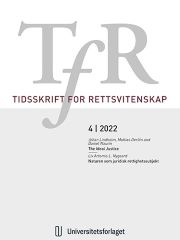The Swedish Supreme Court (‘Högsta domstolen’) has existed since 1789 and in 1909 it was joined by the Supreme Administrative Court (‘Högsta förvaltningsdomstolen’). The function and role of the high courts in Swedish society have indisputably varied over time, but the nature and extent of those shifts are underexplored. The paper seeks to describe the high courts’ role over time by studying the professional background of appointed Justices. We argue that the background of those who are selected to serve reflect the prevailing understanding of the proper functioning of the high courts. To achieve this, we cluster all 453 Swedish Justices (1789–2021) based on professional background into six types and study their distribution over time, as well as measure professional diversity. We conclude that the high courts have become more diverse over time: the general mix of backgrounds on the courts have increased and all Justices tend to have a greater range of experiences. Furthermore, the changes in professional background of the Justices indicate greater importance being placed on high-level, technical legal reasoning rather than practical experience of deciding cases. Finally, and perhaps somewhat counterintuitively, the changes in background also indicate a more deferential attitude to the political institutions.
Full info
Johan Lindholm, Mattias Derlén, and Daniel Naurin
The Ideal Justice: Who Are Selected to Serve and What Does It Say about Swedish High Courts?
Tidsskrift for Rettsvitenskap, 2022, 135(4), pp. 397-431.
DOI: 10.18261/tfr.135.4.1
